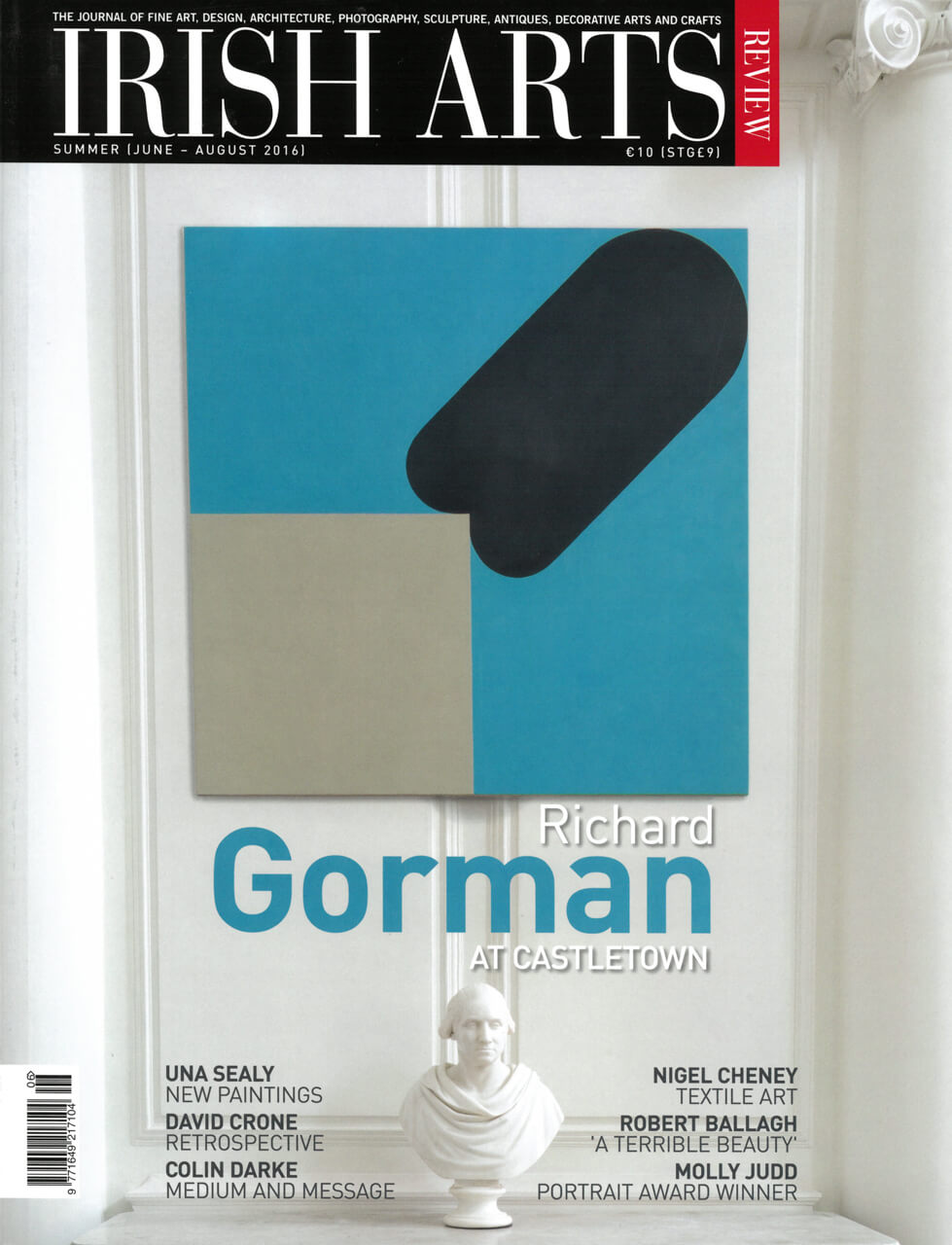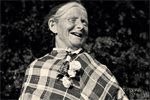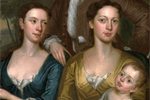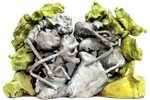
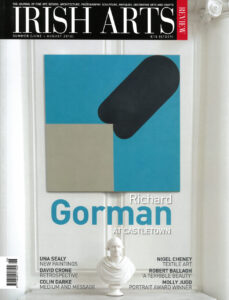
George Warren’s approach to art is influenced and inspired by his interest in analytical psychology, writes Robert Armstrong.
George Warren grew up in an artistic milieu. His father is the sculptor Michael Warren, and the house where he still lives is enriched with art by a wide range of Irish and international artists. He first studied art in the Dublin Institute of Technology where his tutor Patrick Graham quickly recognized an artist ‘engaged and fascinated by his materials’ and motivated by ‘a barrage of intellectual tumult’. He later studied at the Hogeschool voor de Kunsten Utrecht, Netherlands and completed his MFA at the National College of Art and Design in 2012. At last year’s RHA Annual he was awarded the Contemporary Irish Arts Society Award for a work of distinction by a sculptor under thirty-five.
Warren talks about his desire to be ‘honest’ and ‘real’, about preparing for the act of painting; describing the attitude as ‘method painting’, and the necessity ‘to be the best of yourself’. He is interested in the truth that comes from the unconscious and in the Jungian view of dreams. In his sculpture The White Horse of the Unconscious (Fig 1) a hand presses against the breast of the torso as if swearing an oath to tell the truth. Being the best you can be chimes with Jung’s theories of individuation and wholeness – becoming self-actualized – becoming and being an artist.
The 1953 short film Crin Blanc by Albert Lamorisse, is one source for the The White Horse of the Unconscious sculpture. The end of the film, which shows a boy riding a threatened white horse into the sea, symbolizes an escape into the unconscious.
The use of colour in his sculpture reminds us that Warren is primarily a painter. Many of his paintings reference a mandala, and in Eastern art a mandala symbolizes the cosmos or universe, and often follows a square diagrammatic or geometric pattern with gates at the corners and a circle in the middle. In Memories, Dreams, Reflections Carl Jung tells us that he ‘sketched every morning in a notebook a small circular drawing, … which seemed to correspond to my inner situation at the time. … Only gradually did I discover what the mandala really is: … the Self, the wholeness of the personality, which if all goes well is harmonious’.
Warren’s ‘blonde’ paintings follow a mandala structure and present us with heads with barely recognizable eyes and mouths. But they also suggest worlds of different scales operating simultaneously, asking the viewer’s eye to register the push and pull between surface and depth, between macro and micro, and between figuration and abstraction. This process plays out dramatically in Real Blonde a painted bronze re-making of the painting Pink Blonde (Figs 3&4). The painting and the sculpture are of a similar scale and show a remarkable consistency of vision and approach.
The imagery in Warren’s paintings is not always clear. It can take time to adjust one’s eyes, to get the focus pull, to travel the pathways through the spaces to see what is there. A physical or anatomical landscape may need to be navigated. There may be briars or bushes across the path. What looks like a shortcut may turn out to be a detour.
Man Floating in a Lemon is a large painting that depicts a small figure swimming, or struggling in the centre of an ocean of thick cadmium and lemon yellow paint (Fig 2). There is bitterness and zest here. Unlike some of the work, this painting is free of an apparent structure, and the space of the painting feels more outer than inner. The figure is complete and contained in its cocoon of paint, yet disconcertingly two lower limbs float on adjacent ovals of raw canvas. The painting was worked quickly and intuitively from the centre out. It is as if the thought that flickered in the artist’s consciousness was held pure and undiluted like a note in perfect pitch for the duration of making the painting.
Warren is not too concerned with fashion or the latest art-world tropes. Instead he seeks to channel a direct connection to his unconscious and as he has said; ‘rather than living my art, I have a very real sense of my art living within me’. His ability to sustain this concentration of attitude, method and action makes him an artist of immense power and integrity.
‘George Warren: Inner Game’ Hillsboro Fine Art, Dublin 7 July – 6 August 2016.
Robert Armstrong is an artist and Head of Painting at NCAD.
